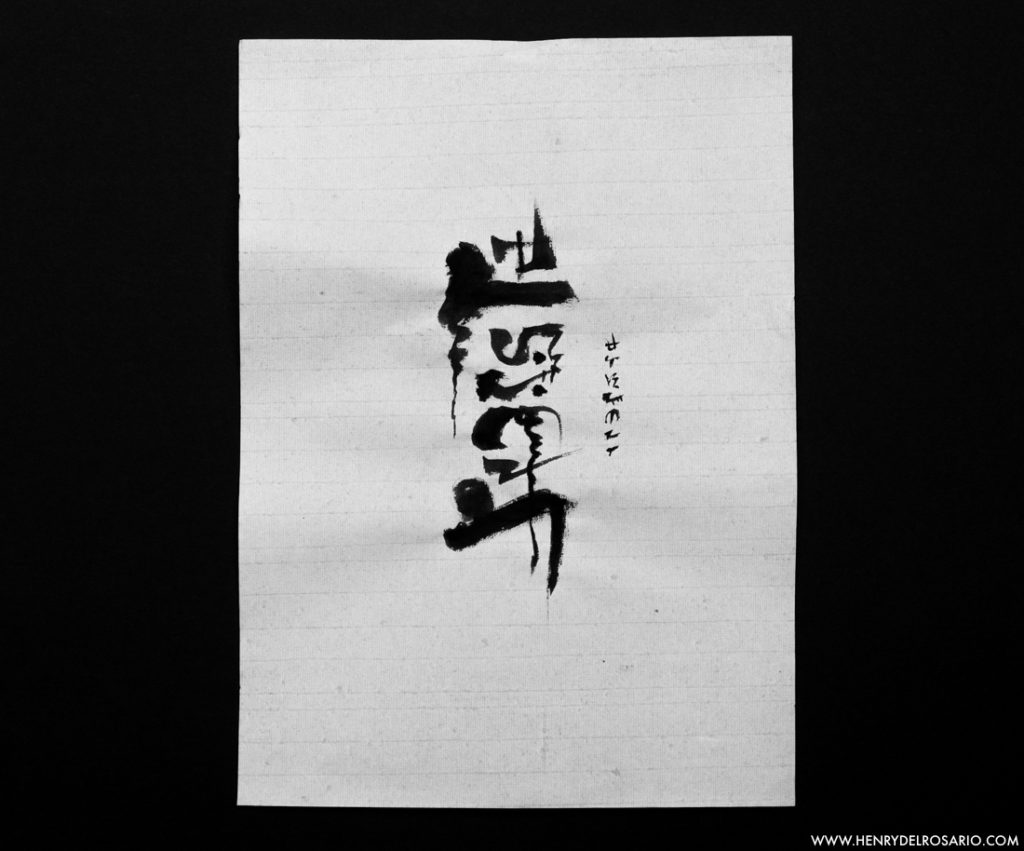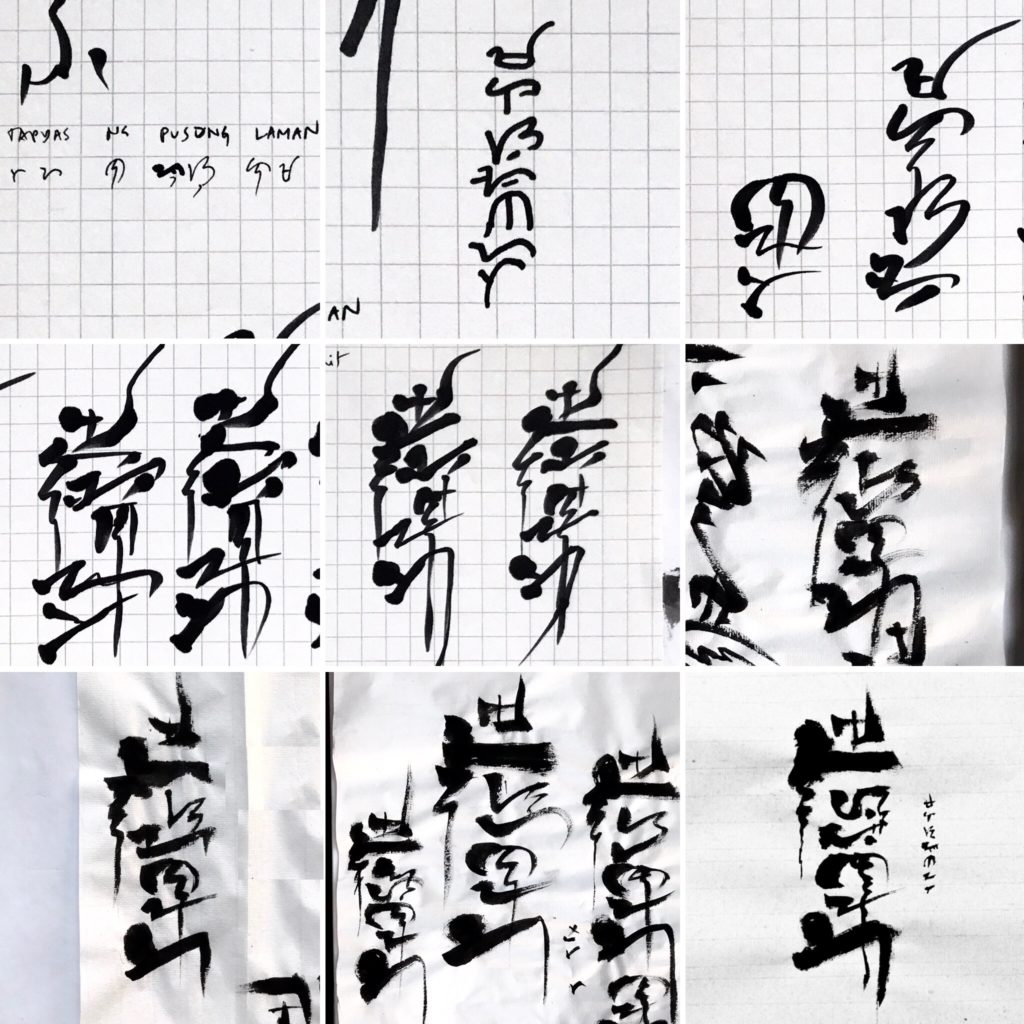Logographing Tapyas ng pusong

Sacred Texts & Calligraphy
I am starting a series of calligraphy pieces in Baybayin script (ancient, Filipino writing system) to examine the meaning and aesthetic of one word or phrase in Tagalog. I am calling the combining of Baybayin alphasyllabic letters into an aesthetic whole, Logographing.
In the Eastern and Western hemispheres, there is a plethora of evidence that calligraphy evolved from copying sacred texts (ie Christianity, Islam, Buddhism, Daoism). Buddhist monks copied scriptures in large amounts during the early Tang dynasty. These scriptures were revered for two reasons: 1) sacred writing content, and 2) technical and aesthetic form of calligraphy.
In Christianity, there are multiple mentions of copying and remembering sacred texts (Proverbs 3:3 and Proverbs 7: 1-3 respectively):
Let love and faithfulness never leave you; bind them around your neck, write them on the tablet of your heart.
My son, keep my words and treasure up my commandments with you; keep my commandments and live; keep my teaching as the apple of your eye; bind them on your fingers; write them on the tablet of your heart.
For religious purposes, the copying of scriptures is important as it preserves the text and contents of religion for future generations as well as strengthens those ideas to the people of the present. The above verses are from the book of Proverbs of the Old Testament. When we look into the New Testament, there is an interesting turn to these purposes in a letter from Paul (a follower of Jesus) to the believers in the city of Corinth (2 Corinthians 3: 2-3):
You yourselves are our letter of recommendation, written on our hearts, to be known and read by all. And you show that you are a letter from Christ delivered by us, written not with ink but with the Spirit of the living God, not on tablets of stone but on tablets of human hearts.
Tapyas ng pusong (Tablet of the heart)
What happens when you do more than just memorize a scripture? What happens when you internalize it?
It is not said outright, but we can conjecture that Paul believes it is the character of the believers (the “You” of the above quote) that essentially makes them a “letter of recommendation” for Paul and his group (the “us” of the above quote) to others. Their character is unique, trustworthy, and is convincing. Why is is their character different? According to Paul, the Spirit has written on the “tablets” of their hearts. Moreover, at the same time, their character is now “written on [Paul’s] heart.”
This is profound because it shows a dynamic and recursive relationship between Paul and the Corinthian church, between writer and reader, between God and Christians. We are all writing and being written. Moreover, reading others writes it in your own heart. This mysterious dynamic is one of the reasons I chose to Logograph in Baybayin the Tagalog translation of “tablet of human hearts.”
Logographing: Aesthetic Transformation
Below are the images of my work from script to Logograph. It’s at once fun to show how aesthetic choices are made, but also important in that art is constantly deconstructing, constructing, deconstructing, and reconstructing. Moreover, to experiment well involves transparency in trial and error.

Technically the bible verse is a phrase, so if you consider the final piece as a whole, it is more like an ideograph (logically then I was “ideographing!”).
Links
- See more Logographing and calligraphy on my Instagram:
- Article about internalizing scripture:
- My collection of bible verses about remembering and internalizing God’s word:
Leave a Reply